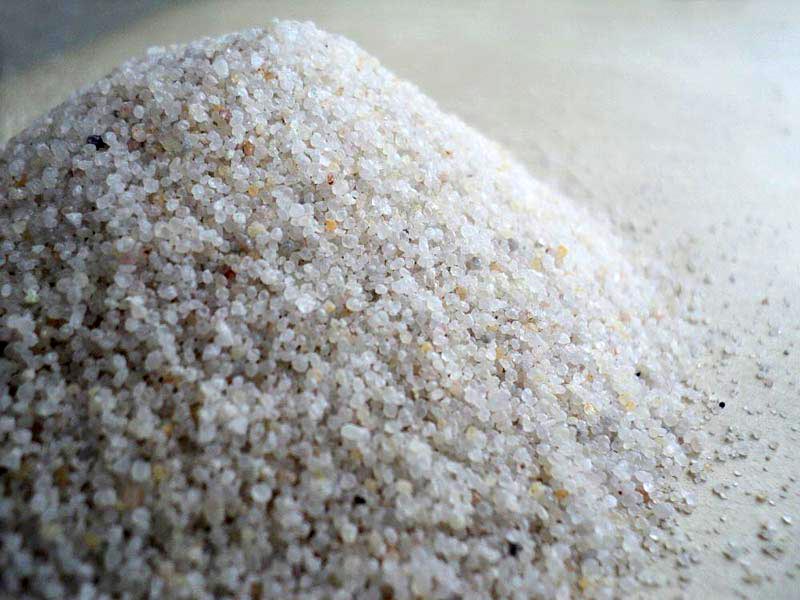

Silica Sand is composed of silicon dioxide particles and is commonly used in glassmaking, foundry molds, sandblasting, filtration systems, and hydraulic fracturing due to its unique properties such as high purity, grain size, and chemical inertness. Its widespread availability and versatility make it a vital component in numerous industrial processes.
Composition: Silicon Dioxide (SiO2)

Silica sand is a primary component in the production of glass. It is melted down and molded into various shapes to make glass bottles, windows, mirrors, fiberglass, and other glass products.

Silica sand is used in construction materials such as concrete, mortar, and asphalt. It provides stability, strength, and durability to these materials.silica sand also contributes to the workability

Silica sand is used as a molding material in foundries for casting metals. It creates precise molds for the production of metal parts and components in industries such as automotive, aerospace, and machinery.

Silica sand is an essential ingredient in the manufacturing of ceramics and refractory materials. It is used to make ceramic tiles, bricks, pottery, and other ceramic products. Additionally, silica sand is added to refractory materials.

Silica sand is commonly used as a filtration medium in water treatment plants, swimming pools, and aquariums. It effectively removes impurities and particles from water, making it safe for consumption or recreational use.

Silica sand is used as an abrasive material in various industries for sandblasting, grinding, and polishing surfaces. It is ideal for removing paint, rust, and other contaminants from metal, wood, and concrete surfaces.
Grain Size: Varies depending on application, typically ranges from 0.05 mm to 2.0 mm.
Color: Usually white or translucent, but may also be found in shades of beige, brown, and pink.
Texture: Generally granular or sandy, with a smooth or rough surface depending on processing.
Silica sand is commonly extracted through open-pit mining or dredging methods from natural deposits such as beaches, dunes, and riverbeds. After extraction, the sand is washed, dried, and sorted into various grades based on particle size and purity.
The mining and processing of silica sand can have significant environmental impacts, including habitat destruction, land degradation, and water pollution. Efforts to mitigate these impacts may include land reclamation, water management strategies, and environmental monitoring programs.
Handling silica sand can pose health and safety risks due to the generation of respirable crystalline silica dust. Exposure to silica dust can cause respiratory diseases such as silicosis, lung cancer, and other respiratory disorders. To minimize exposure, appropriate personal protective equipment (PPE), such as respirators and protective clothing, should be worn, and dust control measures should be implemented.